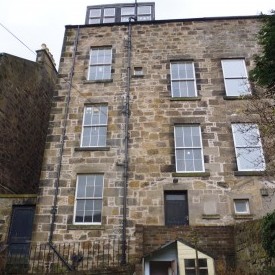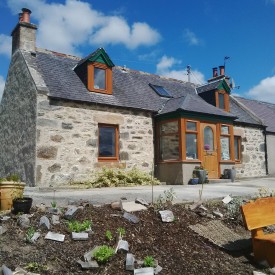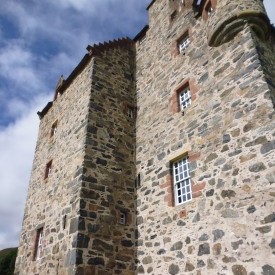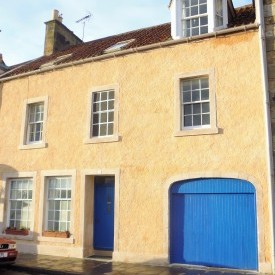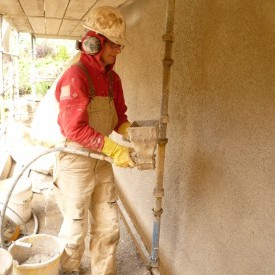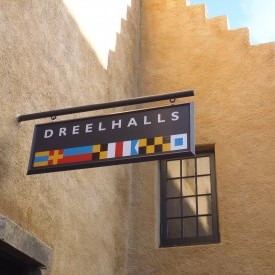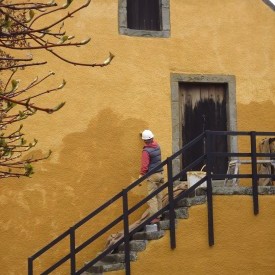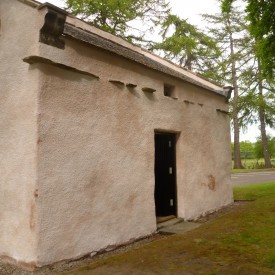Lime mortar is predominately found as the construction /pointing mortar of stone and brick walls built before 1900. It is a naturally permeable material and allows walls to breathe. When a lime built wall has been repaired with modern cement mortar several common problems occur; the core of the wall becomes damp as water is trapped behind the impermeable cement and internal damp problems prevail, cement can also cause preferential weathering of the surfaces of stones causing stone decay. It is always advisable to repair traditional buildings with mortar matched to that used in the original construction.
Lime pointing
Left to right : Private House Burntisland, Cottage Strathpeffer, Private House Elie, Forter Castle Glen Isla.
We have a sound understanding of the range of building limes currently available and can accurately specify a mortar mix which will suit the construction material and location of the building. The choice of aggregate is important, we select a well graded sand to match the original as closely as possible so the new pointing blends with older work. The best replication of a traditional mortar can often be achieved by the inclusion of hot lime within the mix. We have been using gauged hot lime mixes for 20 years, the advantages of these mortars have been demonstrated with many successful projects in Fife and further afield across Scotland. Our skilled team use traditional building and pointing methods, including replacing small ‘pinning’ stones within joints, these methods aid curing and produce beautiful timeless finishes which enhance the appearance of the building. The success of any lime mortar work depends on understanding the curing process, we carefully cover work and control drying so that the mortar cures slowly and lasts for decades.
Lime Harling
Left to right : Harbour House Pittenweem, Harling second coat in progress, Wester Church Anstruther, Cottage extension Blebo Craig.
Lime harling is a traditional finish used to protect buildings from weathering. When a building is covered in a lime coat driving rain water does not penetrate the walls as it is held in the harl and rapidly re-evaporates once precipitation ceases. Therefore a lime harl is a practical finish, it is also an attractive finish, very different to a modern cement dash coat. Our harling reflects the history of a building by following the subtle undulations of the underlying rubble walls to give softly beautiful surfaces. We have carried out many harling projects from small kitchen extensions to entire churches, in all cases attention to detail and careful treatment of door/window openings are vital. Curing of harl is also critical to the long term success of the work, we are renown for meticulous covering and curing of work. Lime harling can be successfully applied to new cement block walls, this is particularly relevant when extending or altering a new building as the traditional finish helps blend the new with the old.
Whilst many of our lime harling projects are in Fife, we are able to carry out harling work throughout Scotland.
Limewash
Left to right : Dreel Halls Anstruther, Culross Palace NTS, Private House Marybank, Kincarrathie Doocot.
Limewash is applied to stonework, brickwork and harl to further protect surfaces, give unity of form and add colour to a building. It is applied in thin coats, with pigments added to provide a range of natural tones in yellow, pink, brown and grey. We combine these earth pigments to create custom colours for each project. We are expert at applying and burnishing limewash to give depth of colour and produce ‘glowing’ buildings.

